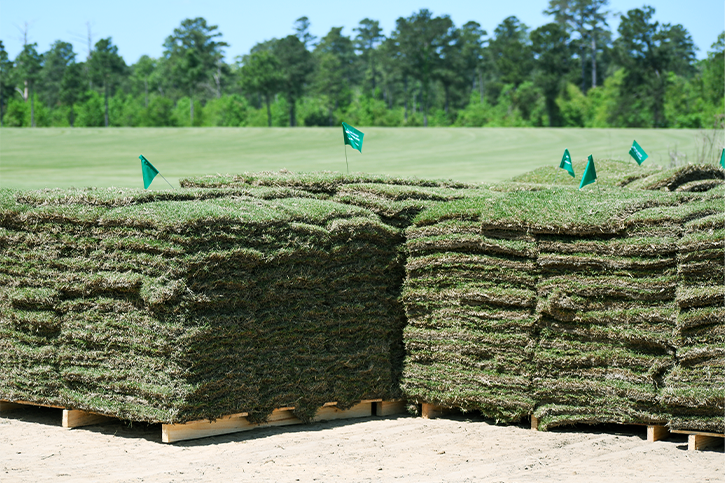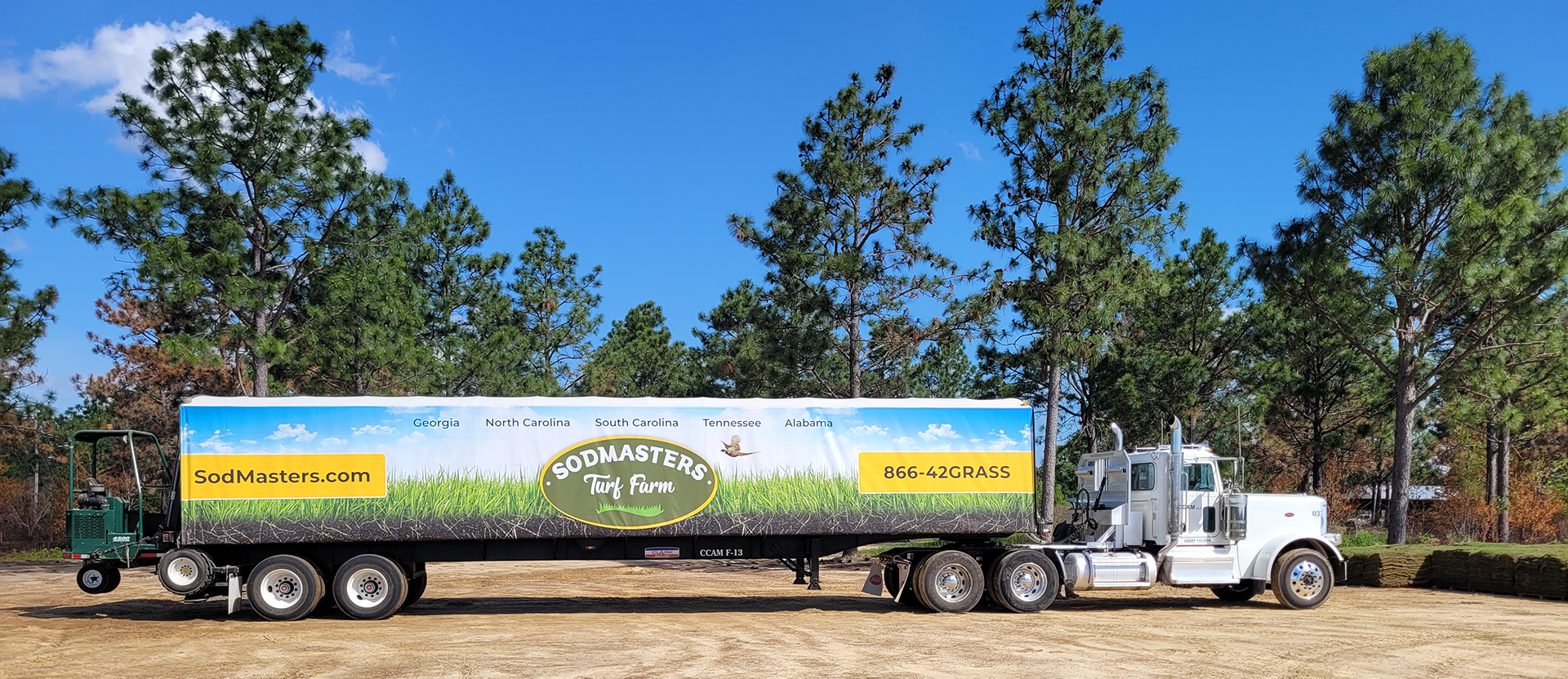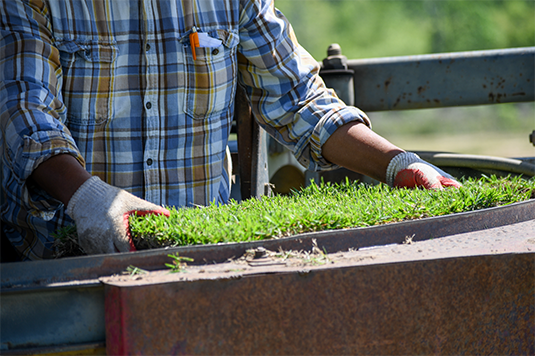Sod Types
At Sodmasters Turf Farm™, we utilize precision farming methods to efficiently produce sod in a sustainable manner so you know your turf will create a healthy, lush, green landscape that is also environmentally green!
























Precision farming uses technology like GPS to map fields, monitor inputs, target fertilizers and pesticides, to specifically apply only what the crop needs with little to no waste. Precision farming reduces and/or eliminates excess inputs and extra mowing that cuts down on the farm’s carbon footprint. Harvesting via GPS means our farms maximize the amount of sod we can harvest and sell, reducing emissions, fuel use, and costs to our customers.

Sustainable agriculture produces crops without depleting the earth’s resources or polluting its environment. It is agriculture that follows the principles of nature to form systems for raising crops that are, like nature, self-sustaining. On our farms, sustainable farming means we test our soils annually and only feed the soil what it needs, when it needs it. We take a holistic approach to healthier soil. We apply products that stimulate the biology of the soil to support the microorganisms that keep the soil healthy and to release tied-up nutrients in the soil that feed the plant. Our stewardship of the land is of prime importance, and is the reason why Sodmasters consistently grows, harvests, and delivers strong, healthy sod for your landscape projects.
